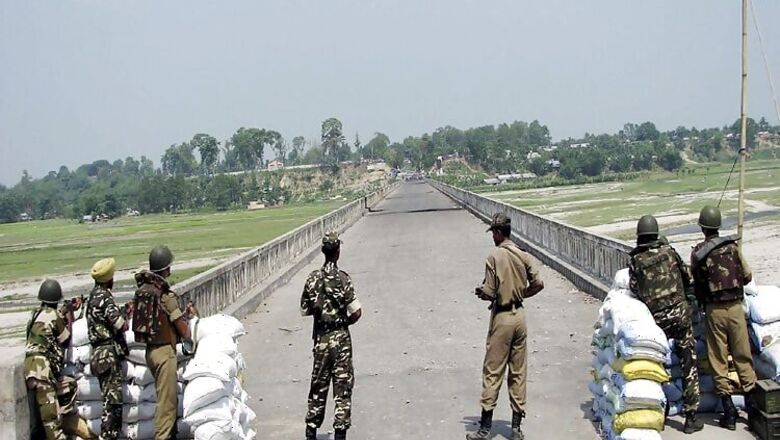
views
An expert panel constituted by the Nepal government to gather historical evidences for backing the country's claim over three strategically-important Indian areas of Kalapani, Lipulekh and Limpiyadhura has submitted its report to Minister for Foreign Affairs Pradeep Kumar Gyawali, according to official sources here.
Nepal in May released the revised political and administrative map of the country laying claim over the three strategically important areas in Uttarakhand, more than six months after India published a new map in November 2019.
India has already termed as untenable the "artificial enlargement" of the territorial claims by Nepal after its Parliament unanimously approved the new political map of the country featuring Lipulekh, Kalapani and Limpiyadhura areas which India maintains belongs to it. New Delhi has also said that Kathmandu's action violated an understanding reached between the two countries to resolve the boundary issues through talks.
The Ministry of External Affairs (MEA) in May said that the revised map of Nepal included parts of the Indian territory and asked Kathmandu to respect India's sovereignty and territorial integrity. "This unilateral act is not based on historical facts and evidence. It is contrary to the bilateral understanding to resolve the outstanding boundary issues through diplomatic dialogue. Such artificial enlargement of territorial claims will not be accepted by India," it had said, adding that Nepal is well aware of India's consistent position on the matter.
"We urge the government of Nepal to refrain from such unjustified cartographic assertion and respect India's sovereignty and territorial integrity. We hope that the Nepalese leadership will create a positive atmosphere for diplomatic dialogue to resolve the outstanding boundary issues," the MEA had said. Foreign Minister Gyawali told reporters that as per the expert committee report, the Treaty of Sugauli signed in 1816 between Nepal and the East India Company has been considered the main basis for the demarcation of Nepal's boundary with India.
The objective of the committee was to prepare Nepal's position paper in boundary negotiations and they have done this job well, the minister told Republica daily. The committee has gathered a number of evidences to prove Nepal's long-held position that the land east of the Kali river, which originates in Limpiyadhura, falls within the Nepalese territories.
Gyawali said that the Nepal government is ready to hold talks with the Indian side anytime. In the course of its study, the panel interviewed eminent personalities from various fields including historians, former government officials, diplomats, heads of security agencies, bureaucrats, politicians and journalists.
The India-Nepal bilateral ties came under strain after Defence Minister Rajnath Singh inaugurated an 80-km-long strategically crucial road connecting the Lipulekh pass with Dharchula in Uttarakhand on May 8. Nepal reacted sharply to the inauguration of the road claiming that it passed through Nepalese territory. India rejected the claim asserting that the road lies completely within its territory.




















Comments
0 comment